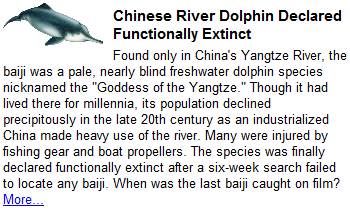Valuing a stock is very important when it comes to fundamental investing, that is, for investors who plan to invest for a medium to longer time period. According to ‘Value Investors’, investing in a business is worth while only if its ‘Intrinsic value’ (also referred to as ‘Present Value’ or ‘Fundamental Value’) is more than its current market value. In simple words, it is worth investing in a stock only if present value of all the expected gains from this stock (in the form of dividends and capital appreciation) is higher than the current market value. When Present Value (PV) is higher than the current market price, the stock said to be being ‘Undervalued’, and when it is lower than the market value, the stock is referred to as being ‘Overvalued’.
For example, consider stock of a Company A with current market price of $20. A value investor will consider investing in this stock only if he feels that the intrinsic value is greater than $20. That is, he assumes that Company A is ‘undervalued’. On the contrary, if the PV is less than $20, an investor may consider selling it short. It’s important to remember is that a cheap stock is not necessarily ‘under valued’. A low price may reflect poor market sentiments or a general economic slowdown and may not necessarily mean that it is under valued.
PV is calculated by discounting all the future gains expected from a stock using the rate of return expected by the investor. These gains may be in the form of dividends and capital appreciation.
Dividend Discounting Method (DDM)
This is the most familiar method applied for valuing companies that have consistently paid out dividends to their investors over the last few years, and are assumed to pay dividends over the next few years as well. Mature companies generally pay-out dividends regularly and are valued using this method. DDM can be modified for companies that are expected to grow consistently at the same rate, or at a higher rate for the first few years and later grow at a lower rate. Following are some of the commonly used DDM formulas.
Companies that are expected to pay consistent dividend per share perpetually can be valued as:
Present Value = Dividend Per Share / Discount Rate
This is the most basic DDM formula. However, its biggest shortcoming is that it assumes zero growth, which is taken care in the following formula:
Present Value = Dividend Per Share / (Discount Rate – Dividend Growth rate)
Companies that are expected to grow at a constant rate perpetually can be valued using this formula, which is also referred to as Gordon Model or Constant Growth DDM. However, it cannot be applied if dividend growth rate exceeds the investor’s rate of return, as the denominator will be negative and a stock value can never be negative.
DDM can be further modified as a Multi Stage DDM for valuing companies that are expected to grow at varying rates initially and then at a constant rate perpetually. For example, a company say, A, can be expected to grow at 10% annually for the initial 3 years, at 7% for the following 3 years and then at 4% perpetually.
While applying DDM for valuing stocks, investors should bear in mind that the value calculated will be as good as their assumptions applied in DDM. A lot of assumptions need to be applied while valuing a stock using DDM. An investor should have a strong fundamental understanding of the company to determine its earnings growth rate and its dividend pay-out ratio, besides knowing his/her own risk adjusted rate of return. Understanding your risk profile will enable you to set a realistic expected rate of return. Hence, PV of a stock will be different for every investor. Higher the expected return, lower will be the PV. Similarly, longer the time period for holding the stock, lower the PV.
Submit Articles to the ArticleSnatch.com Directory - Article submission and content you can use for free at ArticleSnatch.com
Tuesday, September 1, 2009
Subscribe to:
Post Comments (Atom)
Find work from home!
Find more freelance jobs
Word of the Day
Word of the Day
provided by The Free Dictionary
Quote of the Day
Quote of the Day
provided by The Free Dictionary
Article of the Day
Article of the Day
provided by The Free Dictionary
This Day in History
This Day in History
provided by The Free Dictionary
Today's Birthday
Today's Birthday
provided by The Free Dictionary
In the News
In the News
provided by The Free Dictionary












No comments:
Post a Comment